View current page
...more recent posts
The following article about group blogs, blogging-as-performance, and an emerging digital aesthetic or anti-aesthetic was published in the Irish Times for July 2, 2007:
Beyond Art and Design
Haydn ShaughnessyI wonder how many artists agree with this statement. "I reached a point as a critic and as an artist when it seemed like to be a painter everyone had a studio trick that they kept to themselves to differentiate their work." So says Tom Moody, one of the Web's more influential art bloggers and practitioners.
It seems to me honest and accurate and applies not just to painting. Everywhere we turn we're being asked to differentiate ourselves, not just as artists but through what we wear and how we do our jobs. Moody is speaking though for a generation who feel liberated by new technology, for a group that has gone beyond the frustration of trying to find minor points of uniqueness. Up until a week ago his was the first blog to be exhibited as an artwork – at artmovingprojects in Brooklyn, New York. Artmoving projects made Moody's blog a live installation. Even if you haven't embraced blogs yet you'd be tempted to say: Wow, with or without exclamation mark! The blog as installation is yet another example of how virtual, simulated and real environments are blurring.
On his blog a few days ago Moody provided a shortlist of group art blogs (see below), the online equivalent of the cooperative studio. These groups collectively raise an important question about the aesthetics of art born digital.
"As a painter I felt there was no ground left to be broken," says Moody. "And we're faced with these other digital tools which are new and have a lot of potential but don't, we don't, have any kind of aesthetic."
A loose aesthetic for digital art is emerging though? What norms, practice, and social and visual aspirations might inform digital art? I had Tom on the phone recently chewing over that issue.
A growing number of artists are using blogs to display their work (we recently featured Chris Ashley here on Convergence Culture, an artist who blogs an image a day). The Internet allows artists to connect quickly with each other and one result of that is they create cooperative blogs, just like some choose to open cooperative galleries. But as Tom Moody points out the chemistry of cooperation can be better. There's little financial overhead and there's no sense that cooperation is a necessary evil. But here's the interesting part.
In posting to a group blog, says Moody, you make a judgment about the work you would not like to show on your own blog. [1]
Through that act you are implicitly helping to form an aesthetic. It's not that you post to the group blog work you are not identified with at all. But you are saying something about your choices.
The underlying statement is that the artist has different artistic identities. Somewhere in the judgment about where your work belongs lie unarticulated statements about the nature and purpose of digital art. This emergent theory of digital aesthetics absolutely suits the medium. The judgments are not articulated but they are out on show.
The lack of an aesthetic is not the only problem facing digital artists. Galleries are reluctant to exhibit their work because as yet there are few collectors and no secondary market. And there is a suspicion. A digital art work when reproduced on paper can be reproduced indefinitely. Old fashioned prints created by master printers were at least authenticated by a third party. The unease that galleries and collectors feel are important practicalities.
Just like conceptual art thirty years ago digital art needs bold collectors who will buy knowing that a selection of these works will grow exponentially in value. But to be attracted that far, you sense a collector needs to know there are underlying disciplines at work, purpose and coherence that is at least comparable with their previous experience, a sense that a generation of artists, rather than the odd maverick, is pushing the medium, and confidence that the practitioners are not simply going to fade away..
To get that far the artists themselves need to start articulating the kind of purpose that resonates with a sense of destiny. Many digital artists, or performance artists who use digital media to get works into print, recoil from the idea that they can game themselves up into a "movement". Nonetheless when I put it to Tom he acknowledged: "More and more. I think the artists I'm working with and collaborating with are moving in the same direction."
Another problem for the digital artist is that many of the tools of the trade were created for designers – Microsoft Paint [2] and Photoshop are two prime examples. Websites that showcase art made from these tools, particularly the influential Rhizome, an atheist's Bible of new media art, are to Moody's way of thinking, pushing a design aesthetic rather than an artistic one. [3] I'm not wholly sure that I agree with him, or that digital art should separate itself from design, but the point proven is that articulating the digital aesthetic is still a work in progress.
Group art blogs:
http://www.supercentral.org/wordpress/
http://doublehappiness.ilikenicethings.com/ [4]
References courtesy Tom Moody: http://www.digitalmediatree.com/tommoody/
Artmovingprojects: http://www.artmovingprojects.com/
Rhizome: http://www.rhizome.org/
MY NOTES/AFTERTHOUGHTS TO THE ABOVE:
1. I can't take credit for this line of thought. It was first articulated by Nasty Nets member Marisa Olson on her blog: "[Nasty Nets has] been a nice place for me to follow thoughts I might otherwise censor or drop, and to make and post work I'd not likely post elsewhere..." The idea that an anti-aesthetic emerges from everyone on the site doing this is something I've kicked around with various members.
2. MSPaint isn't really a program designers use, it's an amateur program that ships with every edition of Windows. Adobe Illustrator would be a better example.
3. Whoops--if I said that it's not what I meant. Rhizome is an art site. Rhizome and Eyebeam often feature projects on their reBlog pages that I consider more in the nature of design problems (robot alarm clocks that roll away from you when you try to hit snooze, to use an example from Eyebeam). But it isn't accurate to say that Rhizome "pushes a design aesthetic rather than an artistic one." If anything, it's the notions of conceptual art embodied in digital practice that I find problematic, when they take the form of what some of us have called XYZ art.
4. Not all of these blogs--or individual posts on the blogs--are based on an aesthetic of "what I don't show on my own blog." Everyone has different motivations for what and where they post and I make no claim to speak for everyone on these sites.

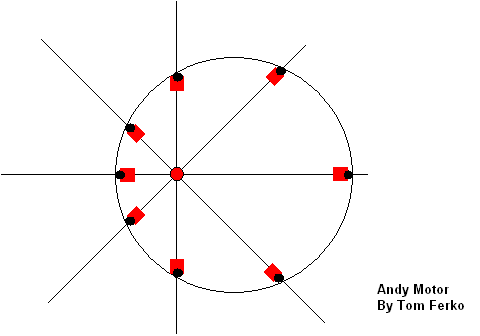
Comments to this page appear to be experiencing technical difficulties (i.e., no comments are showing up). Please stand by.
Update: fixed, thanks jB!
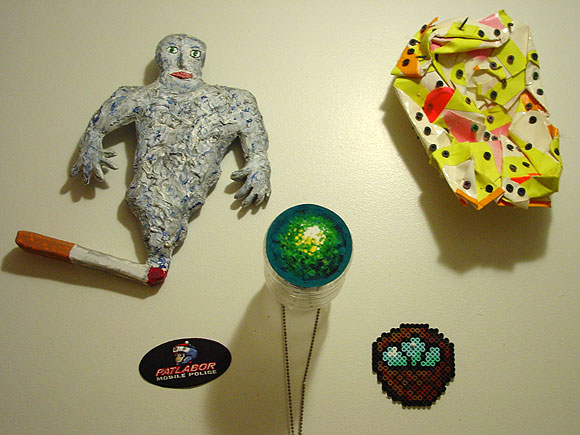
My kitchen wall, up near the ceiling. Clockwise from top left: Thor Johnson, John Parker, Mondo Mondo Trading Post, Patlabor Mobile Police patch. The thing in the middle is mine.
This is the obligatory "light posting for the next few days" post--summer is here and I'm going outside.
"Ratatouille is a nearly flawless piece of popular art," writes A. O. Scott of the New York Times, in a review accompanied by this picture:
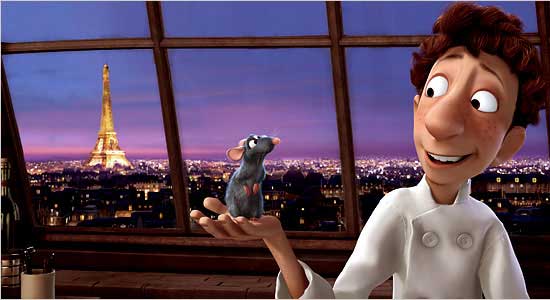
Stephanie Zacharek in Salon calls it "one of the most beautiful animated pictures I've ever seen," in a review accompanied by this picture:

Any student or critic of art, popular or unpopular, knows why these statements are wrong and what's missing from these images and these movies (also Shrek, the Incredibles, Toy Story, and the rest): line. For reasons mostly of budget and a kind of unthinking rush to modernize, filmmakers have thrown out possibly the central tool in the history of visual expression, and replaced it with tricks of sfumato and chiaroscuro that give objects a rounded, "realistic" look but make everything in the frame bulbous and doughy. It would be like making music with no "attack transients" (sharp sounds at the beginning of notes that give them their texture and bite)--all music would become billowy and ersatz, like New Age music. Years after photography mooted realistic painting in the world of portraits and "scenes," these Tinseltown hacks persist in imitating photographic depth, using computer short cuts, and the results are often simply grotesque (see above--eyes without lashes that are merely encircled by reptilian lids).
It's not a fluke that Toy Story "pioneer" Jon Lasseter worships Japanese animator Hayao Miyazaki and has given his films a boost in the US. It's guilt from a fast food franchise owner at all the excellent cuisine he's displaced. Miyazaki is a poet of line.
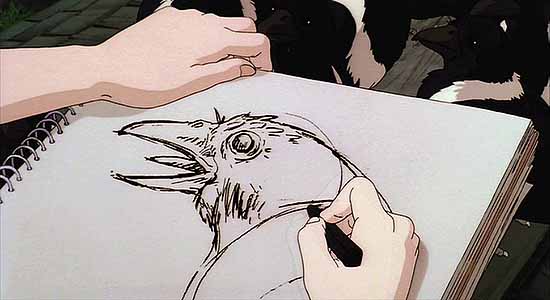
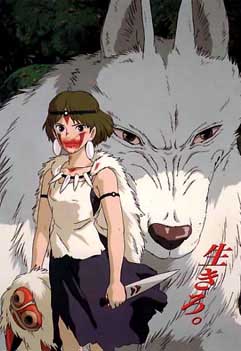
So expressive! Whereas Pixar and its offspring have the smooth, slightly frozen look of '70s album cover illustration done with an airbrush:
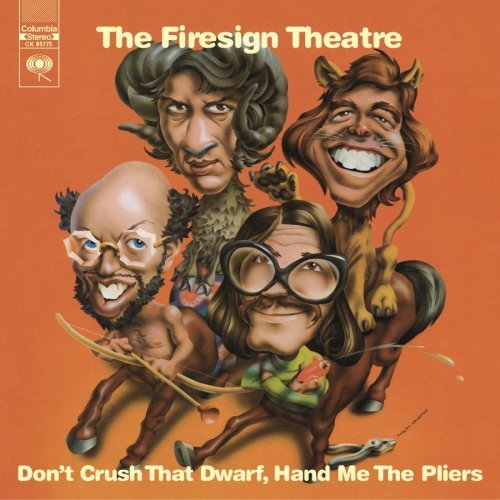
A topic for another day: the Pixar movies are also the embodiment of Disney Values. The plucky little guy triumphs over adversity and learns a valuable lesson. Whereas in real life plucky little guys have boots in their faces all over town, while the big entities (such as entertainment conglomerates) grow more and more dominant.
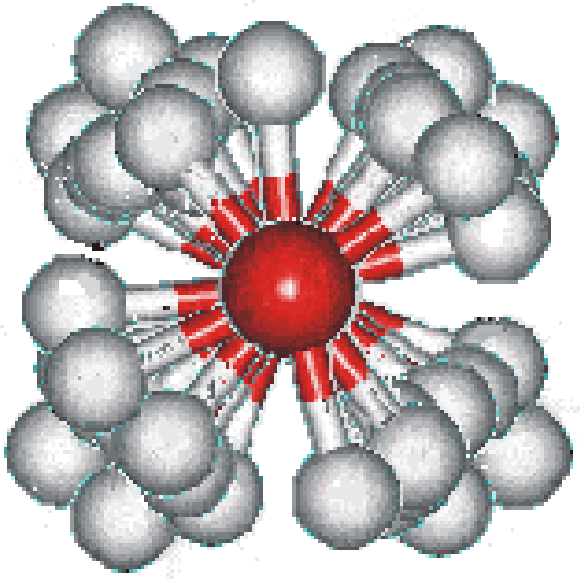
On the National Symphony's program of videogame music* at the Kennedy Center in Washington DC, here are the
RAVE REVIEWS!* "Live orchestral music with cutting-edge video screen visuals from Halo, Mario, Zelda, Warcraft, Metal Gear Solid, Kingdom Hearts, Sonic, Everquest II, God of War, Medal of Honor, Myst, Tron, and a classic arcade medley from Pong to Donkey Kong" [hat tip shm]
Los Angeles Times: "A GROUNDBREAKING SHOW! Video game music has come a long way from monotone bleeps to full-blown orchestral, choral, and opera arrangements. This fully choreographed tribute highlights the best games and their best features, whether it's the full choir accompanying Halo or the light show complementing Tron."
USA Today: "This spectacle is just the latest sign that songs written for the interactive gaming world are blasting out of consoles and into the mainstream!"
The Washington Times: "Video games are attracting serious composing talent!"
MTV.com: "If your idea of a hot Saturday night is a few hours of Xbox and a trip to the local Pink Floyd laser-light show, then Video Games Live is your dream date!"
Keywords: adolescent impulse dig dug
"Vox Computational" [mp3 removed]
Update: The chimy percussion in the chorus was bugging me so I redid this. The track has subtler percussion (an octave lower, plus a new "high" chime), a vibrato synth wail before the break, and it's been remixed.
Update 2: A couple of notes sounded out of tune to me, so I fixed them.
